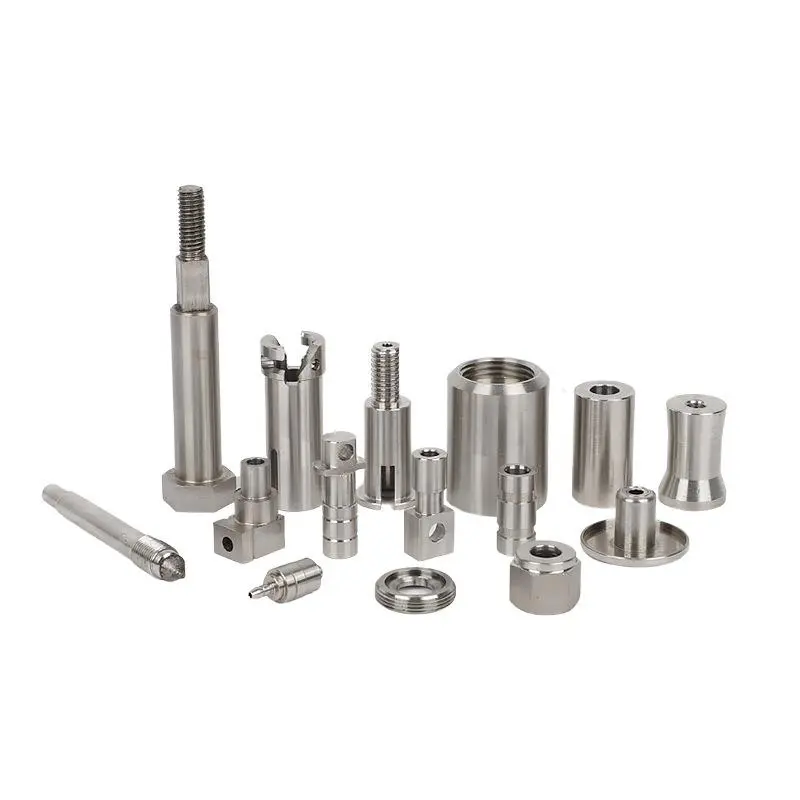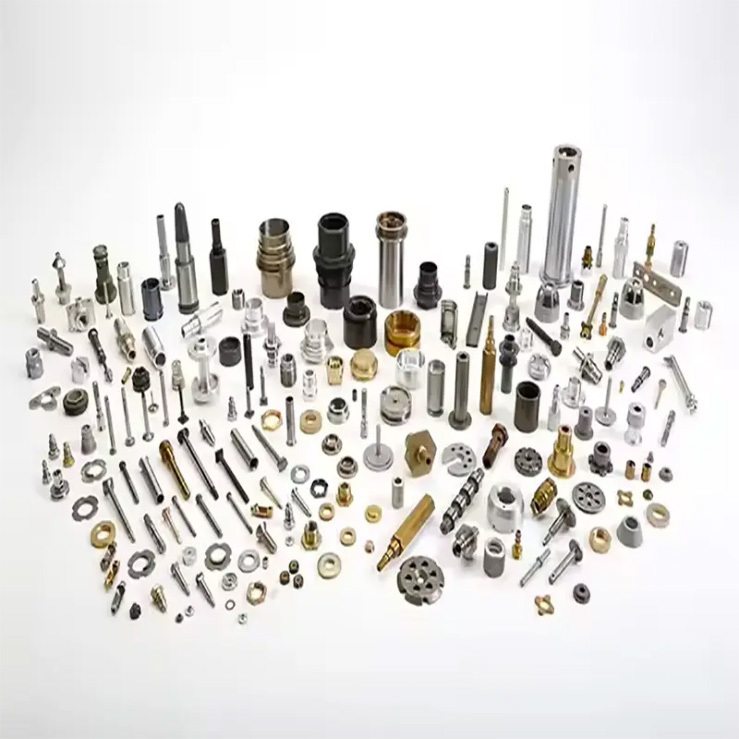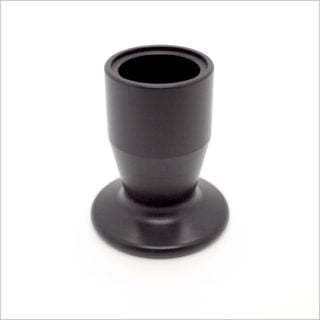Quality and Efficiency: CNC Swiss Machining for Stainless Steel Components
Published Time:
2025-10-06
Quality and Efficiency: CNC Swiss Machining for Stainless Steel Components
Table of Contents
- 1. Introduction to CNC Swiss Machining
- 2. What is CNC Swiss Machining?
- 3. Advantages of CNC Swiss Machining for Stainless Steel
- 4. Applications of CNC Swiss Machining
- 5. The CNC Swiss Machining Process Explained
- 6. Material Considerations for Stainless Steel Machining
- 7. Challenges in CNC Swiss Machining
- 8. The Future of CNC Swiss Machining
- 9. Conclusion
- 10. Frequently Asked Questions
1. Introduction to CNC Swiss Machining
CNC Swiss machining has revolutionized the manufacturing landscape, particularly for industries requiring precision components. This technique allows the production of intricate parts with high efficiency and minimal waste. As manufacturers seek to improve operational productivity while maintaining high standards of quality, CNC Swiss machining stands out as the ideal solution. In this article, we will delve into the intricacies of CNC Swiss machining, focusing on its benefits in producing stainless steel components.
2. What is CNC Swiss Machining?
CNC Swiss machining refers to a type of automatic lathe machining that uses computer numerical control (CNC) technology to create diverse components from raw materials. The process is particularly suited for the production of small, complex parts and is especially effective when working with stainless steel. The term "Swiss" originates from the early machines developed in Switzerland for precision watchmaking. Today, CNC Swiss machining has expanded its applications far beyond watch parts, becoming essential in various industries, including aerospace, automotive, and medical devices.
3. Advantages of CNC Swiss Machining for Stainless Steel
CNC Swiss machining offers unmatched advantages when it comes to manufacturing stainless steel components. Below, we explore some of the most significant benefits that this machining technique brings to the table.
3.1 Precision and Accuracy
One of the standout features of CNC Swiss machining is its **precision**. The CNC technology allows manufacturers to achieve tolerances as tight as ±0.001 inches. This capability ensures that each part meets stringent specifications, making it a preferred choice for applications where accuracy is paramount. The use of advanced tools and the ability to monitor processes in real-time further enhance the precision of the components being produced.
3.2 Efficiency and Speed
Efficiency is another critical advantage of CNC Swiss machining. The process is designed for high-volume production, meaning it can produce large quantities of parts quickly without sacrificing quality. The automatic setup and tooling adjustments reduce downtime significantly, allowing manufacturers to maximize output. The high cutting speeds associated with CNC Swiss machines ensure that production can keep pace with demanding market needs.
3.3 Cost-Effectiveness
CNC Swiss machining is not only efficient but also cost-effective in the long run. While the initial investment in CNC equipment may be higher than traditional machining methods, the reduced cycle times and minimal waste translate into lower overall production costs. Additionally, the high precision reduces the likelihood of defects, further enhancing cost savings through fewer reworks or scrap materials.
4. Applications of CNC Swiss Machining
CNC Swiss machining caters to a broad spectrum of industries, owing to its versatility and precision. Key applications include:
- **Aerospace Components**: Critical parts such as connectors, fittings, and brackets require high strength and precision.
- **Automotive Parts**: From engine components to transmission parts, CNC Swiss machining ensures the reliability and performance of automotive systems.
- **Medical Devices**: High-quality components for surgical instruments and implants are often produced using CNC Swiss techniques to meet stringent health regulations.
- **Electronics**: Complex parts used in devices, including housings and connectors, benefit from the efficiency of CNC Swiss machining.
5. The CNC Swiss Machining Process Explained
Understanding the CNC Swiss machining process involves recognizing the setup and production steps that contribute to its efficiency and precision.
5.1 Setup and Tooling
Before machining can commence, thorough setup and tooling are essential. The operator configures the machine by selecting appropriate tooling based on the part design. Tools such as drill bits, lathe tools, and milling cutters are utilized to achieve the desired profile of the component. Proper setup ensures that the machine can execute cuts with high precision.
5.2 Production Steps
Once the setup is complete, the production process begins. The raw material is securely held in place, and the CNC program is executed. The machine operates with minimal human intervention, performing multiple operations such as turning, drilling, and milling in a single setup. This integrated process not only enhances efficiency but also guarantees consistent quality across all produced parts.
6. Material Considerations for Stainless Steel Machining
Stainless steel is a preferred material in industries requiring durability and corrosion resistance. However, machining stainless steel presents unique challenges.
- **Material Hardness**: Stainless steel is tougher than many other metals, demanding the use of specialized tooling and cutting parameters.
- **Heat Generation**: The machining process generates heat, which can lead to tool wear and distortion of the parts. Effective cooling strategies and optimal cutting speeds are essential to mitigate these issues.
Choosing the right grade of stainless steel is equally crucial, as different grades offer varying levels of machinability. Grades such as 304 and 316 are commonly used in CNC Swiss machining due to their excellent balance of strength and corrosion resistance.
7. Challenges in CNC Swiss Machining
Despite its advantages, CNC Swiss machining is not without challenges. Some common issues include:
- **Tool Wear**: Due to the hardness of stainless steel, tools can wear out quickly, necessitating frequent replacement and increasing operational costs.
- **Complex Designs**: While CNC Swiss machines can handle complex geometries, more intricate designs may require additional programming and tooling, which can extend lead times.
- **Initial Investment**: The cost of CNC Swiss machines and setup can be significant, which may deter some manufacturers, particularly small businesses.
8. The Future of CNC Swiss Machining
As industries continue to evolve, so too does CNC Swiss machining. Innovations in machine technology, software improvements, and materials science are paving the way for even greater efficiency and capabilities. The integration of Industry 4.0 principles, such as IoT (Internet of Things) connectivity, will enable real-time monitoring and predictive maintenance, further enhancing productivity.
Additionally, advancements in automation and robotics are likely to facilitate more streamlined operations, allowing manufacturers to respond swiftly to changing market demands.
9. Conclusion
CNC Swiss machining has emerged as a cornerstone of modern manufacturing, particularly for producing stainless steel components. The combination of precision, efficiency, and cost-effectiveness makes it an invaluable technique across various industries. By understanding the intricacies of the process and its applications, manufacturers can leverage CNC Swiss machining to enhance product quality and meet market demands effectively. As the industry continues to innovate, embracing advancements will be key to staying competitive in a rapidly changing landscape.
10. Frequently Asked Questions
1. What is the typical tolerance achievable with CNC Swiss machining?
CNC Swiss machining can achieve tolerances as tight as ±0.001 inches, making it suitable for applications requiring high precision.
2. Why is stainless steel commonly used in CNC Swiss machining?
Stainless steel offers excellent strength, corrosion resistance, and durability, making it ideal for a variety of applications in demanding environments.
3. How does CNC Swiss machining compare to traditional machining methods?
CNC Swiss machining is generally more efficient, produces higher-quality parts, and allows for more complex geometries compared to traditional machining methods.
4. What industries benefit the most from CNC Swiss machining?
CNC Swiss machining is widely used in aerospace, automotive, medical devices, and electronics industries, among others.
5. What are the main challenges associated with CNC Swiss machining?
Challenges include tool wear, managing complex designs, and the significant initial investment required for CNC equipment.
Previous Page
Previous Page
NewsCenter
Beijing Pafinal Precision Machinery Co., Ltd.
Email:sales@pafinal.com

Address: No. 239 Huanhe South Road, Tianjin Pilot Free Trade Zone (Airport Economic Zone), Tianjin
中企跨境-全域组件
制作前进入CSS配置样式
sales@pafinal.com:
Whatsapp:
在线客服添加返回顶部
图片alt标题设置: PAFINAL
表单验证提示文本: Content cannot be empty!
循环体没有内容时: Sorry,no matching items were found.
CSS / JS 文件放置地




 2025-10-06
2025-10-06


